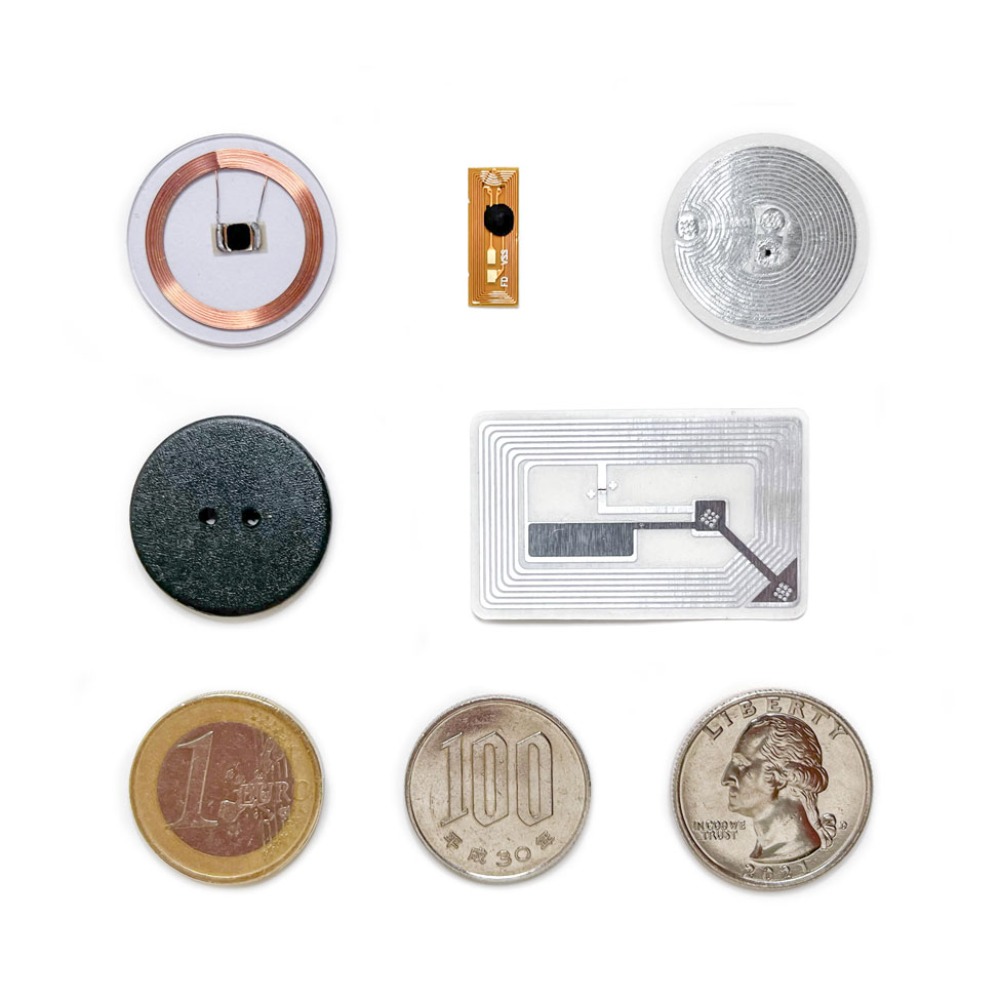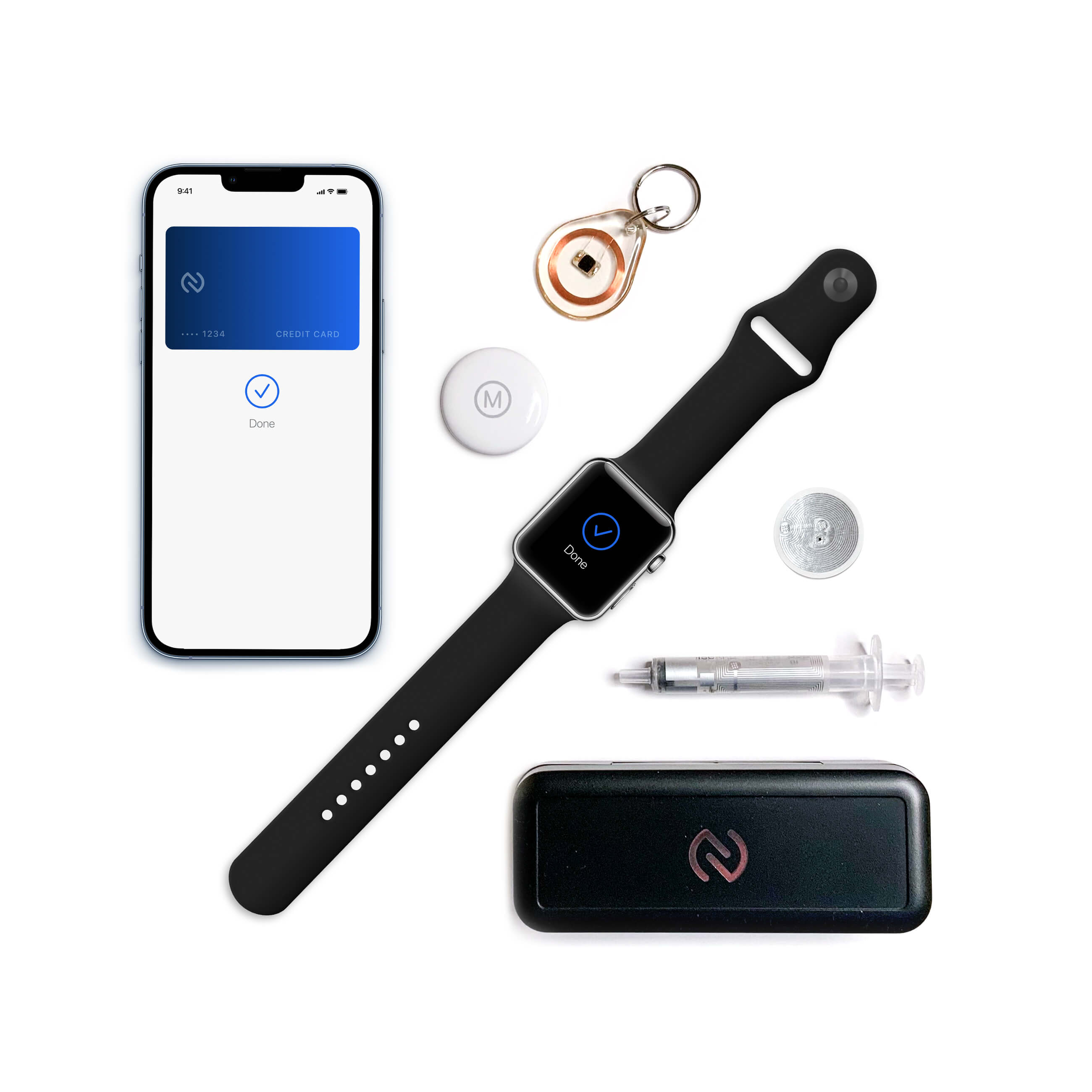Technical Overview
Near Field Communication (NFC) is a contactless communication technology operating over a radio using a base frequency of 13.56 MHz with a typical range of up to 2cm and data rate from 46kbit/s up to 1.7Mbp/s. In addition to data connections, NFC is unique in that one side can also transmit power over the connection allowing for battery-less operating modes. The NFC Forum defines a superset of Specifications that enable NFC connections for a variety of products including mobiles, tablets, wearables, automobiles, door locks, along with battery-less use case like tags in apparel, packaging, and other consumer products. The Certified Compliant range of NFC Forum connections is 5mm.
Designed for Flexibility
NFC communication technology is used by several different existing contactless communication protocols in the market which use different coding for signal and load modulation. The NFC Forum created a set of specifications allowing NFC Forum Devices to use these different communication protocols. As a result, NFC Forum Devices are able to communicate with:
- ISO/IEC 14443 Type A compliant Readers and Cards
- ISO/IEC 14443 Type B compliant Readers and Cards
- ISO/IEC 15693 compliant Cards
- ISO/IEC 18092 compliant Devices
- JIS-X 6319-4 compliant Readers and Cards
- NFC Forum Tags
- Other NFC Forum Devices
Additionally the NFC Forum has defined a variety of modes of operation that allow NFC devices emulate a contactless card, become a reader or writing device of tags or cards, and most recently the ability to transmit up to 1W of power for wireless charging.
Designed for Contactless
The user experience for NFC is centered on a tap. NFC-based radios have distinct properties to enable these sorts of use cases which are very different from many other consumer wireless technologies. NFC must start, negotiate a connection while also determining power requirements of the target entity, if needed, power up the remote device, and then transmit with error correction while also gracefully disconnecting all in an instant - the time it takes a user to tap. The primary properties of this connection include:
- Remarkably Fast Startup
- Power Sensing
- Short Connection Time
- Small Data Payload
The NFC Forum defines several operating modes, the most common today is Card Emulation Mode. This allows a device like a mobile phone or wearable, to emulate a contactless card and connect into an existing framework like payment. The service provider does not need to know it is connecting with a smart device, only that it “looks like” a card.
Operating Modes
Card Emulation mode
The NFC Forum Device operates like a contactless card that is able to communicate with a contactless reader device. Typical use cases are the emulation of contactless banking cards for payment or to emulate contactless tickets for public transport.
Reader / Writer mode
The NFC Forum Device operates like a contactless reader communicating with contactless tags or devices. Mobile application developers can design custom applications that can interact with NFC tags and other devices both reading and then writing data over the tap-based connection. This mode also allows devices to read tags that can include web addresses, contact info, or automations.
Wireless Charging mode
This mode is used for dedicated transfer of up to 1W of power over the NFC connection. Communication is performed to manage the power transfer. This mode will charge small devices with a limited power supply such as a stylus, headset, fitness tracker, smartwatch, or other small consumer products.
Host Card Emulation
With this implementation, an HCE app located in the Device Host is taking care of emulating the contactless card. In this configuration, the NFC Controller is forwarding all received contactless commands to the Device Host. The HCE app can then communicate with the contactless reader device by using the NFC API.
Peer-to-Peer mode
Two NFC Forum Devices are touched together to exchange data. This mode is used to easily exchange the contact data of the device users for example or to make a quick connection to transfer the music connection between two sets of speakers.
Secure Element based Card Emulation
With this mode, the emulation of the contactless card is managed by a secure element inside the NFC Forum Device. This Secure Element can be either a security chip embedded in the NFC Forum Device or an NFC enabled SIM card inserted in the NFC Forum Device. For both solutions, the commands received from the contactless reader will be forwarded to the secure element for processing. This implementation allows the same high-security level for transactions as those provided by contactless smart card solutions.

Tags
NFC Forum Tags are contactless memory cards hosting a specially formatted data payload specified as an NDEF record (NFC Data Exchange Format) defined by an NFC Forum Specification.
Tags are available in a wide variety of form factors. The NFC Forum has defined five different NFC Forum Tag types to allow the usage of many different implementations of sizes, capacities, cost, and functionality. These different NFC Forum Tag types differ by the underlying communication protocol and data structure to store NDEF messages but the resulting overall behavior of NFC Forum Tags is identical.
An NFC Forum Device reading the NDEF message from an NFC Forum Tag will initiate a specific action according to the information stored in this NDEF message. As lots of information can be stored in an NFC Forum Tag, there are many different actions triggered when read by the NFC Forum Device. The following table shows some of the common used data types and the typical corresponding actions initiated by the NFC Forum Device:
Information stored on NFC Forum Tag
Action initiated at NFC Forum Device
Internet Link
Show the linked website
Phone number
Initiate a phone call
Short message
Send a short message
Send an e-mail
Point of interest
Shows a map with the point of interest
Address
Start navigation to this address
Contact data
Store the contact data on the NFC Forum Device
Bluetooth pairing information
Pair with the Bluetooth device
WiFi keys
Login at the WLAN router
Getting Started
The NFC Forum Specification and Test Cases define both the digital and analog properties of NFC connectivity. Specifications are available to most members for free, and for a nominal cost to Adopter Members and non-members. Depending on your application and if you are using a Certified Product, you may not necessarily need to access all of the specifications as your supplier can help you through your implementation.
NDEF Records
Most tap-based consumer use cases are implemented with an NDEF Record. Even the most casual of implementors should access this Specification and become familiar with both the syntax and operation of tags with differing mobile Operating System providers. There are also a variety of NFC Tag Reading/Writing applications for mobiles that will help those new to the domain learn about tag operation and functionality. One example is NFC Tools in our Product Showcase. Generally in many of these applications the NFC Tag is the simple to use entry-point into a connected web app. Understanding tag capabilities, encoding, and serialization before you start to build the online experience is paramount.
Developer Tools
Many of the silicon providers in the market provide SDKs and development kits for more sophisticated applications of NFC. We encourage developers to learn the unique capabilities of each supplier, their possible integration or encoding capabilities, and production capacities. It is common for NFC applications, especially in the consumer market, to require high volume capacity so while this isn’t a development issue, it is an important design consideration.
Mobile Operating System system providers include various levels of NFC functionality in their developer tool suites. Generally, these implementations can create a read or write session, transmit data across the connection, and provide user feedback throughout the process. Most tag-based application implementations simply hand off processing to the basic NFC reading functionality of the handset which when tapped will present the user a dialog confirming an URL to visit. So while this is most simple implementation, your application can extend this functionality through an SDK.
Tools for Success
The NFC Forum offers other programs as you navigate development to market availability. Product designers should consider integrating the NFC Branding Marks to help users identify the location of the NFC antenna for a positive user experience. Additionally the NFC Forum has a network of Authorized Test Labs that are experts with Authorized Test Tools and NFC functionality that can help you navigate NFC Forum Compliance Certification ensuring that your product is interoperable with millions of other NFC devices.
Throughout the year, the NFC Forum hosts webinars and Member Meetings where the community shares new ideas, business connections, and best practices. As a member of the NFC Forum, you are connected into this network and wealth of knowledge.


